Wednesday 3rd March 2021
Good morning Year 6 – we hope you are all well!
We are looking forward to seeing you all on Zoom at 9:05am.
Warm up activity (15 minutes)
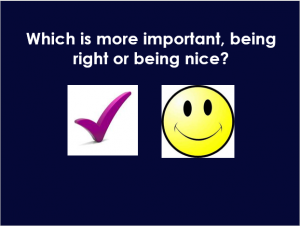
Reading (30 minutes)
Start by reading the next part of the text:
“Oh, do behave!” a girl’s voice said, and a moment later the girl herself was there, bending over the beast and tickling the soft white ruff of fur under its chin. The fierce amber eyes closed happily, and Tom heard its tail whisking against her clothes. “Don’t worry,” she laughed, smiling up at him. “He’s a lamb. I mean, he’s a wolf really, but he’s as gentle as a lamb.”
“Tom,” said Valentine, his eyes twinkling with amusement, “meet my daughter Katherine, and Dog.”
“Dog?” Tom came down off his chair, feeling foolish and still a little scared. He had thought the brute must have escaped from the zoo in Circle Park.
“It’s a long story,” said Valentine. “Katherine lived on the raft-city of Puerto Angeles until she was five. Then her mother died, and she was sent to live with me. I brought Dog back for her as a present from my expedition to the Ice Wastes, but Katherine couldn’t speak very much Anglish in those days and she’d never heard of wolves, so when she first saw him she said, ‘Dog!’, and it sort of stuck.”
“He’s perfectly tame,” the girl promised, still smiling up at Tom. “Father found him when he was just a cub. He had to shoot the mother, but he hadn’t the heart to finish poor Dog off. He likes it best if you tickle his tummy. Dog, I mean, not Father.” She laughed. She has a lot of long, dark hair, and her father’s grey eyes and the same quick, dazzling smile, and she was dressed in the narrow silk trousers and flowing tunic that were all the rage in High London that summer. Tom gazed at her in wonder. He had seen pictures of Valentine’s daughter, but he had never realised how beautiful she was.
“Look,” she said, “he likes you!”
Dog had ambled over to sniff at the hem of Tom’s tunic. His tail swished from side to side and a wet, pink tongue rasped over Tom’s fingers.
“If Dog likes people,” said Katherine, “I usually find I like them too. So come along Father; introduce us properly!”
Valentine laughed. “Well, Kate, this is Tom Natsworthy, who has been sent down here to help, and if your wolf has finished with him, I think we will have to let him get to work.” He put a kindly hand on Tom’s shoulder. “There’s not much to be done; we’ll just take a last look around the Yards and then …” he glanced at the note from Pomeroy, then tore it up into little pieces and dropped them into the red recycling bin besides his desk. “Then you can go.”
Tom was not sure what surprised him more – that Valentine was letting him off, or that he was coming down to the yards in person. Senior Guildsmen usually preferred to sit in the comfort of the office and let the apprentices do the hard work down in the heat and fumes, but here was Valentine pulling off his black robes, clipping a pen into the pocket of his waistcoat, pausing to grin at Tom from the doorway.
“Come along then,” he said. “The sooner we start, the sooner you can be off to join the fun in Kensington Gardens …”
In as much detail as you can, explain what impression you get of Thaddeus Valentine and why you think that.
Writing (1 hour)
In the text from the reading session, it takes about Kensington Gardens which is a real place.
Here is a picture:

Have a look at the information about Kensington Gardens at the website below:
https://kids.kiddle.co/Kensington_Gardens
Based on everything you have read (and any extra research you have completed), I would like you to create an information document about Kensington Gardens.
You can create:
- a non-chronological report
- an information leaflet that a tourist might need
- an information page for a magazine
Make sure it is colourful and includes lots of information!
Maths (1 hour 10 minutes)
Starter challenge:
Here are today’s Rapid Reasoning questions:
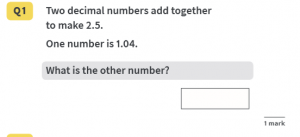
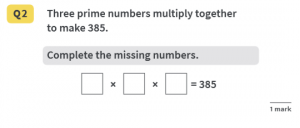
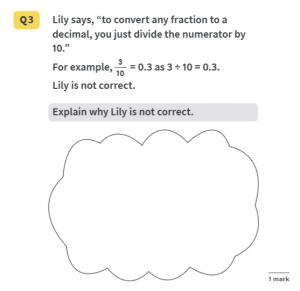
Main activity:
Today we are going to be recapping on how we round whole numbers and decimals.
We are going to begin with whole numbers and we will do this in a live lesson at 11am.
https://zoom.us/j/94172015780?pwd=cC9ZTUlYZ0NSOUpRZTBDMG16bGQ2Zz09
Meeting ID: 941 7201 5780
Passcode: 39v8WM
Now try these:
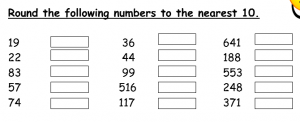

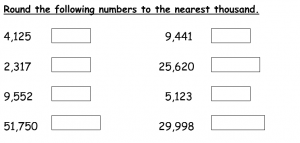
Now we will be looking at how to round decimals.
Watch this video where I will recap on how to do this.
Now your turn. I have completed the first one for you as an example.
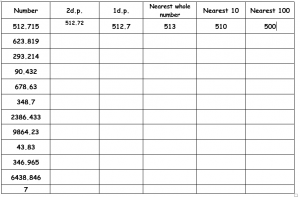
Spelling (15 minutes)
Spend some time playing a spelling game at the link below.
https://www.topmarks.co.uk/english-games/7-11-years/spelling-and-grammar
Science (1 hour 15 minutes)
Today’s question is:
How do we see things?
Start with these warm-up questions:
- List as many light sources as you can. Organise them into natural and artificial.
- Which of the kingdoms (animals, plants or fungi) need the most light? Justify your answer.
- Which light source is the most important? Why?
- Could we live without light? Explain.
Here is this week’s vocabulary:
Ray – the straight path which with light travels.
Emit – to produce and give off/out a type of energy (e.g. light or sound)
Watch the video at the link below to understand how our eyes help us to see:
https://www.bbc.co.uk/programmes/p0118jbj
It is important to understand that our eyes do not create a light source, instead a light source will reflect light off of an object and into our eye allowing us to see.
Look at this diagram to help you understand:
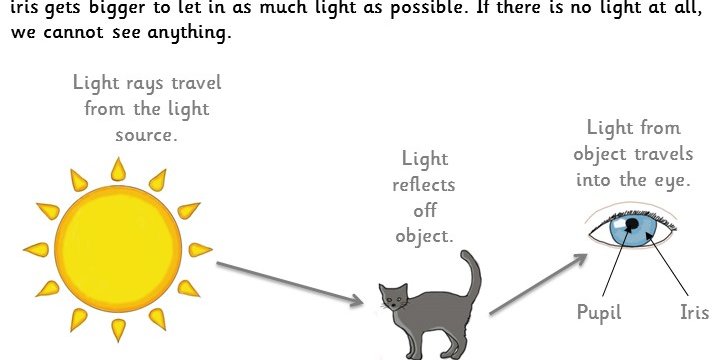
Task:
Create and complete an investigation to check that this is correct.
One way you could do this is by making the room really dark and shining a torch onto different items.
Now read the following text:
How We See
Light
Anything that gives out (emits) light is known as a light source. Some light sources are artificial, such as streetlamps, torches, fluorescent tubes and television screens; others are natural, such as stars, lightning and glow-worms. The most important light source to us is the Sun: it not only provides most of the light with which we are able to see the world around us, but also gives light energy to all plants so that they are able to make their own food and – as a by-product – produce almost all the oxygen in the atmosphere that we rely on to survive. This process is known as photosynthesis. See if you can find out what the two parts of this word (‘photo’ and ‘synthesis’) mean.
A very narrow beam of light is referred to as a light ray. Diagrams of light rays use arrows to indicate the direction in which the light is travelling. Light rays travel away from the source of the light in straight lines until they hit something. Sometimes you can see light from the Sun passing through clouds and the sunbeams appear as straight lines.
After light has been reflected off an object – such as a tree or a book – it still travels in straight lines, but in a new direction. If the light enters our eyes, we see the object because our eyes can detect light.
Transparent, opaque and translucent
If light strikes a sheet of clear glass, most of it will pass straight through. Glass is said to be transparent. The same can be said of pure water. However, if light strikes the surface of a block of wood, sheet of metal (or you!), it will not pass through. Things that light will not pass through are said to be opaque. Some substances only allow light to pass through partially. Such substances are said to be translucent. Frosted glass and many plastic ice cream containers and lunch boxes are translucent.
The Eye
Our eyes have a small opening at the front – the pupil – through which the light can enter. It is protected by a clear ‘window’ called the cornea. The pupil appears black because it is dark inside our eye. At the back of our eye is a sensitive sheet of nerves called the retina. These nerves can detect light when it strikes the retina.
The Eye 
Light rays pass through the pupil and through a clear lens (like the lenses in a pair of spectacles) before striking the retina where an image is then formed. This image, which is inverted (upside-down) because of the way the rays cross over when they pass through the lens, is like a small picture of what you are looking at. The nerves in the retina send messages about the image to the brain which then enables you to interpret what you are looking at. So, it can be argued that our eyes simply collect the light, and it is our brain that allows us to see.
Task:
Now answer the following questions:
1.Name some light sources which are:
a.artificial
b.natural
2.Why is sunlight essential to our survival?
3.Explain what is meant if a material is:
a.transparent
b.opaque
c.translucent
4.Give examples of transparent, opaque and translucent objects.
5.Explain how the eye and brain help us to see.
Spanish (30 minutes)
Based on everything we have learn about restaurants, I would like you to create a Spanish menu.
Here are some examples to help you:
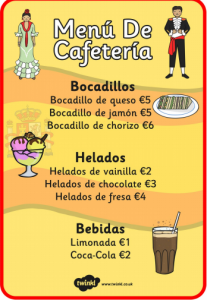
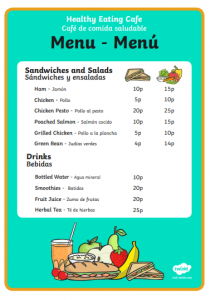
Here is a mat containing the names of many different Spanish foods to help you:
Make it as creative and colourful as you can.
TT Rockstars
Make sure you take part in this week’s competition.
Story Time
Here it is – the final chapter of The Explorer
Did you enjoy it? Let us know what you thought!
Well done for another great day Year 6. Don’t forget that tomorrow is World Book Day so please come to the morning Zoom dressed up and bring a book that you enjoy with you!
Miss Kinsella and Mrs Maruzza

I don’t know why but I have a feeling that Valentine is different from the other Guilds men and that he is nicer that any of them
Have a read of the text and then write what impression you get of Valentine and why.
I think being nice because if your mean and smart no one will like you because of how like you behave so you could say something like ( ughhh! 5 times 5 is 25 your so dumm Jeff ) which would hurt someones feelings but if your nice you’d just say. ( Oh i’m sorry i don’t know the answer lets try and figure it out together.) This is the correct way to reply to someone . so i say be nice
Lovely Dan, well done.
warm up
I think u should be nice because when your nice u can make friends when u have friends they can help u and when they help u, u get smart because u learned from them and even better your teacher will make u smarter . so that’s why u should be nice and not always right because if u always right and mean nobody will like u
Great, Alex! Well done.
reading
too be honest I don’t really get any impression from valentine so I feel nothing and he is normal
Do you think he is a nice person?
Math’s nearest 10
20 , 20 , 80 , 60 , 70 , 30 , 40 , 100 , 20 , 20 , 40 , 90 , 50 , 50 , 70.
Nearest 100
200 , 300 , 700 , 800 , 1000 , 300 , 500 , 700 , 200 , 100 , 400 , 900 , 800 , 600 , 800
Nearest 1000
4000 , 2000 , 10,000 , 2000 , 9000 , 6000 , 5000 , 30,000
decimal rounding
(example done)
1= 623.82 , 623.8 , 624 , 620 , 600
2= 293.21 , 293.2 , 293 , 290 , 300
3= 90.43 , 90.4 , 90 , 90 , 100
4= 678.63 , 678.6 , 679 , 680 , 700
5= 348.7 , 348.7 , 349 , 350 , 400
6= 2386.43 , 2386.4 , 2386 , 2390 , 2400
7= 9864.23 , 9864.2 , 9864 , 9860 , 9900
8= 43.83 , 43.8 , 44 , 40 , 0
9= 346.97 , 347.9 , 348 , 350 , 300
10= 6438.85 , 6439.8 , 6440 , 6440 , 6400
11= 7 , 7 , 10 , 10 , 0
Great Dan, well done! Remember when you are rounding you need to keep the numbers after the one you’re rounding to. For example, 9704 to the nearest 100 would be 9700 not 700.
Maths
Nearest 10
1. 20
2. 20
3. 80
4. 60.
5. 70
6. 40
7. 40
8. 100
9. 510
10. 120
11. 640
12. 190
13. 550
14. 250
15. 270
nearest 100
1. 200
2. 300
3. 700
4. 800
5. 100
6. 300
7. 500
8. 10,000
9. 5000
10. 1000
11. 8000
12. 2000
13. 6000
14. 9000
15. 4000
nearest 1000
1. 4000
2. 2000
3. 10,000
4. 51,000
5. 9000
6. 20,000
7. 5000
8. 30,000
Well done Alex!